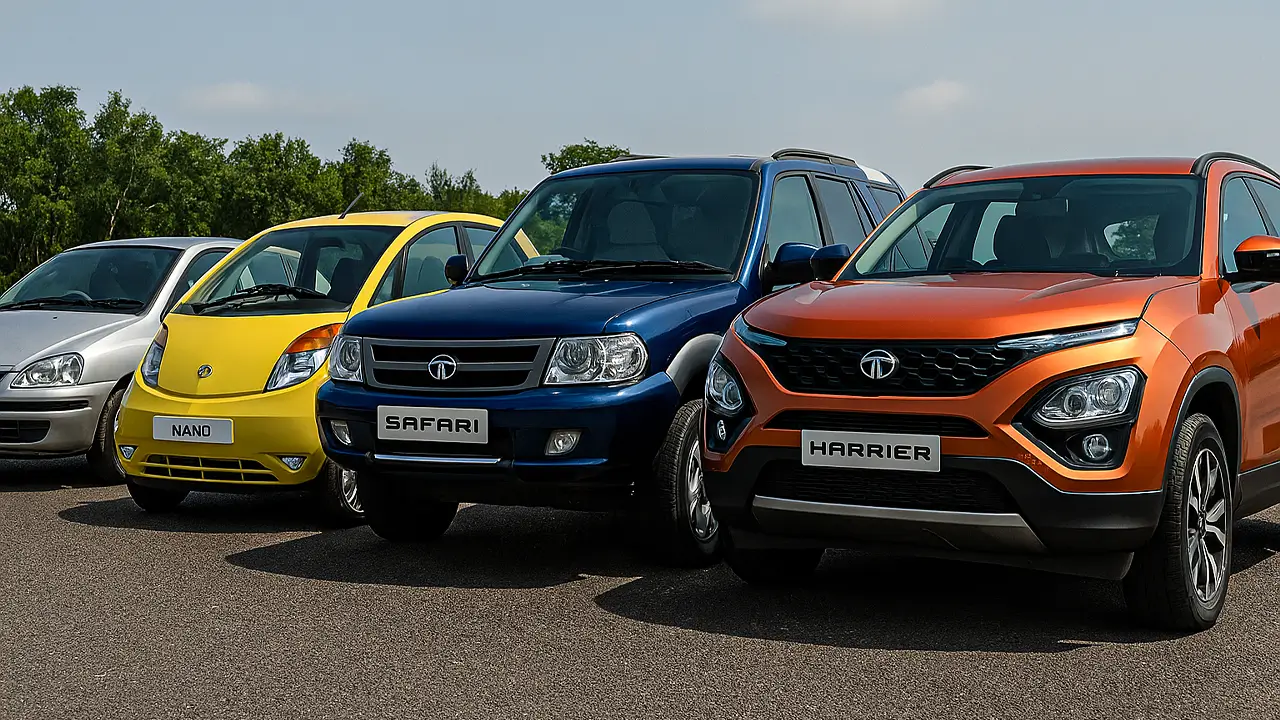The story really began in 1998 when Tata Motors launched the Indica. It was the first car that was fully designed and made in India. This was a big deal back then. Most cars on Indian roads were either foreign brands or joint ventures. The Indica gave Indians a sense of pride. It looked different, offered good space, and was affordable.
At first, it had some problems. But Tata Motors listened, improved it, and made it better with time. Soon, the Indica became a common sight on Indian roads. It was popular with families and also found its place in taxi services. The success of Indica helped Tata Motors believe in its own potential.
Slowly moving forward
After the Indica, Tata Motors launched more cars like the Indigo and the Nano. The Indigo was aimed at families looking for a sedan on a budget. The Nano was an experiment. It was called the world’s cheapest car and was made to help two-wheeler users switch to four-wheelers. While it got a lot of attention, the Nano didn’t do well in the long run.
During this time, Tata Motors also started looking beyond India. In 2008, it made headlines by buying Jaguar and Land Rover. This was a bold move. Many people thought it was risky. But over the years, this decision turned out to be one of the smartest things Tata Motors ever did. Not only did the company save two iconic British brands, but it also learned a lot about design, technology, and customer experience.
A fresh start with a new design and focus
From around 2015, things began to change in a big way. Tata Motors knew it had to do more than just sell budget-friendly cars. People now wanted style, comfort, safety, and features that felt premium. Tata responded with a new design language. The launch of cars like the Tiago, Tigor, and Nexon showed that the brand was serious about making cars that looked good and felt modern.
The Tiago especially changed how people saw Tata cars. It was well-built, looked nice, and was priced right. Buyers who had never considered Tata before started visiting showrooms again.
The Nexon took things even further. It was a compact SUV that offered good looks, a strong body, and top safety ratings. Tata Motors also introduced an electric version of the Nexon, showing its interest in cleaner mobility. Slowly but surely, the company was changing its image.
The rise of the Tata Harrier
Now we come to the Harrier. This SUV marked a big step in the evolution of Tata Motors. It was bold, stylish, and based on a platform derived from Land Rover. This gave it a strong base and solid handling. The design turned heads, and the spacious cabin made it ideal for families.
For the first time in years, Tata had a car that could go head-to-head with premium players. The Harrier was not just about price. It was about presence. It showed the world that Tata could build a car that was smart, powerful, and global in appeal.
The Harrier was followed by the Safari, which brought back a legendary name with a fresh look. Both models proved that Tata Motors was not just back, it was ready to lead.
Conclusion
I have always found the Tata Motors story fascinating. What I like most is how the company didn’t give up. There were moments when things didn’t go right. Some models failed. Some decisions were questioned. But Tata Motors stayed patient, listened to its customers, and made steady progress.
The transition from Indica to Harrier is not just a product change. It is a shift in thinking. It is about believing that Indian companies can make world-class vehicles. And today, Tata is doing just that.
It is also one of the few companies in India that is focusing seriously on electric vehicles. That says a lot about its vision for the future.
The evolution of Tata Motors from Indica to Harrier is a journey worth talking about. It shows how a brand can grow, change, and improve with time. It is a reminder that success is not always fast, but with the right steps, it is always possible.
- Audi GT50 Concept: A Loud Reminder of Why Car Enthusiasts Fell in Love With Audi
- Nearly 30% of UK Drivers Believe Car Tax Should Be Based on Mileage — Survey
- Why Planes and Boats Escaped the Luxury Tax But Cars Didn’t
- Australia’s Headlight Confusion: Authorities Warn Drivers After Viral $250 Headlight Rule Goes Wild Online
- 2025 Hyundai Venue Facelift Launched in India – Full Details, Variants, and Price
